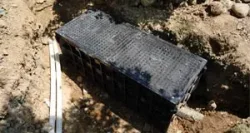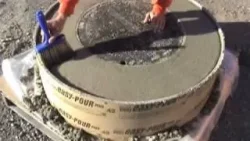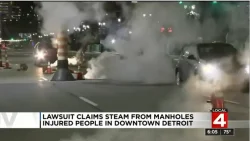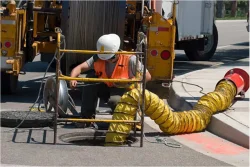2022-06-28
The select of fiber handhole depend on the types of cable being installed.
Rural install. The cables are laid in a deep trench dug with a cable plow, which is then covered with dirt and marked with cable tapes. The cables are lead to handholes near the village and the telecom box in your home.
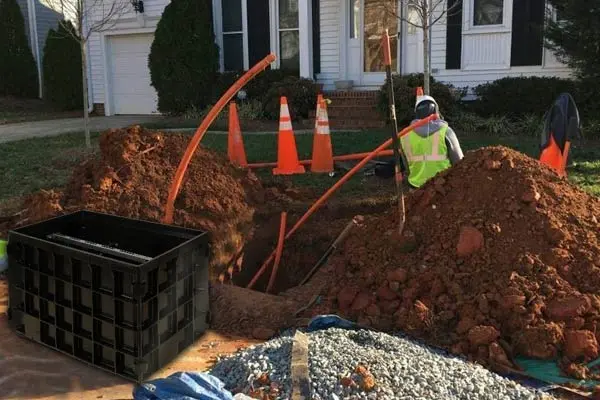
Urban Underground cable can be installed in ducts by threading a pull rope through the duct, attaching it to the cable, then pulling the cable by the duct, the cables are lead to underground chambers, telecom handholes, and telecom pedestals that are capable of hundreds of fiber optic access.
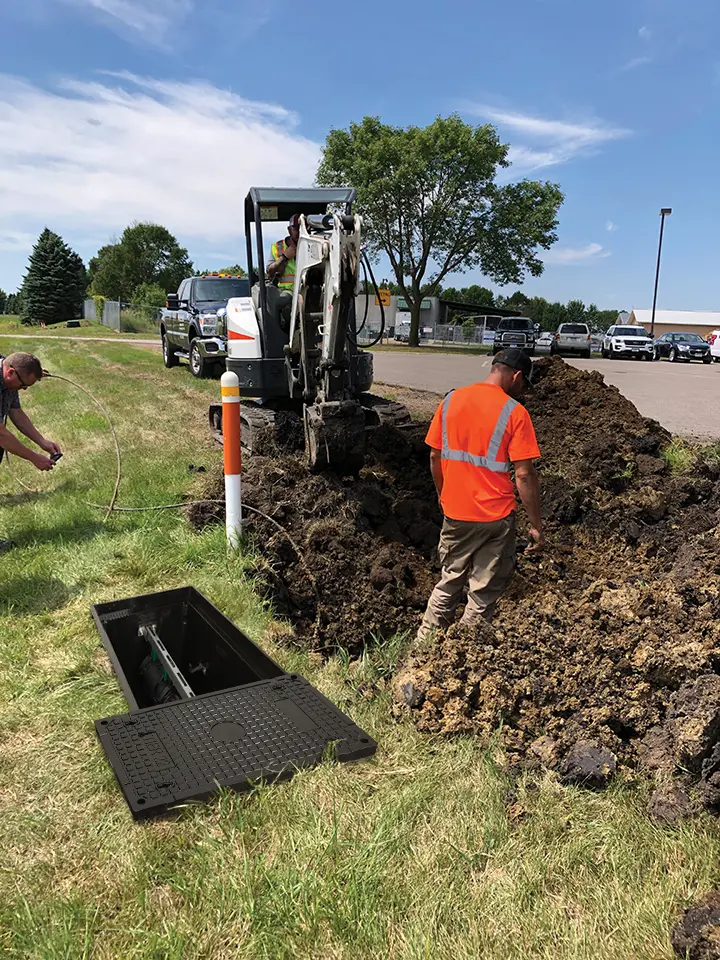
Fiber Optic Install on Poles
Self-supporting aerial fiber install. Self-supporting aerial cables (or called figure 8 cables) are suspended directly from overhead poles. Other aerial cables can be suspended from messenger wires — strong steel wires strung between poles. If a messenger wire is used, the aerial cable is lashed to it with a special lashing wire running around both the cable and the messenger wire. This is a very common installation for many overhead fiber cables.
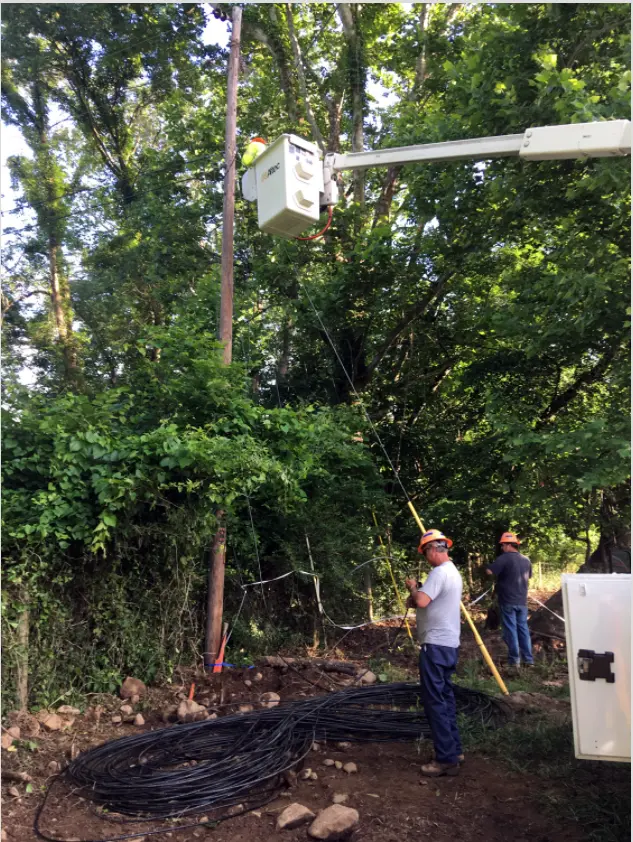
The typical fiber crew for mountain, valley, and basin areas can consist of 6–12 personnel depending on the length and the size of the fiber cable. fiber cables are placed on overhead poles that prevent the threat of rotten, rolling rock, and extreme weather. In a residential area where cables go on poles, it is especially important to ensure that no matter the task to be performed that all personnel are approved by comed and are certified electrically qualified by their local national brotherhood of electrical workers.
Pre-planning and Project Management
There are a few things to note about each type of installation, pre-planning and project management are critical to successful installation drawings generally do not note the voltage electrical configuration number of transformers, secondary tapes position of the system neutral condition of the poles, and whether all poles are accessible by bucket truck or traditional climbing method.
Difference between rural and urban fiber optic cable install
In areas such as open country and lone town, trenching is still an economical and timely method to produce an open cable laying environment. Underground cable laying is necessary and unavoidable in certain areas for various reasons such as nature and heritage conservation, natural obstacles, aesthetics, space and safety. Planning consent and reduced risk of service supply loss through extreme weather.
In urban areas where space for telecommunications cable is limited, Fiber cable is placed into ducts that are being built below the ground surface. Protects cable from shifting rocks, aggressive rodents, and/or damage from hand shovels. The cable can be lashed out from a fiberglass handhole and stored in it without extensive and expensive digging.
Do not Exceed Optical and Mechanical Performance Specifications.
The optical cable is a high-capacity transport medium that is sensitive to excessive pulling force, tight bends, and crushing forces, therefore, proper care must be taken during the installation procedure that does not exceed the cable’s optical and mechanical performance specifications. Fiber optic cables are ordered in specific lengths as calculated by an OSP Engineer. Their lengths are determined by measuring the distance between splice manholes plus the excess cable length required for racking the cable at all manhole locations and slack storage for maintenance. Additional cable length is required at each splice manhole to reach the actual splice location (often in a trailer or tent adjacent to the manhole). In addition, the extra length should be included in the ordered length to be available if errors are made during the splicing operation. If the excess splice length is not known, the splicing foreman should be consulted. Never cut a fiber cable without first consulting the OSP Engineer responsible for the job.
Avoid Risk and Hazard
To minimize the risks of an accident in the work area, follow the existing rules for setting up warning signs, barricades, manhole guards, and cones. Failure to do so may result in injury to the personnel or damage to the cable. Ensure that the tools and equipment used for the cable installation are in proper working order. Improperly functioning equipment may damage cables or cause injury to personnel. Be careful when working near electrical hazards, if electric lines are passing through or near the right-of-way where installation is being performed. Bond all metallic components in the underground system together. At all points where anyone may come in contact with the metallic components of the underground cable system, ground the bonded metallic components to a proper earth ground to avoid electric hazards produced by power lines or any other means.
What is personal protective equipment?
Personal protective equipment, commonly referred to as “PPE”, is equipment worn to minimize exposure to hazards that cause serious workplace injuries and illnesses. These injuries and illnesses may result from contact with chemical, radiological, physical, electrical, mechanical, or other workplace hazards. Personal protective equipment may include items such as gloves, safety glasses and shoes, earplugs or muffs, hard hats, respirators, or coveralls, vests and full body suits. The employer has the responsibility to offer PPE to his personnel (except safety glasses) for all outside plant construction activities.
Traffic Safety
All applicable federal, state and local departments of transportation regulations and codes shall be met including the use of safety equipment such as reflective safety vests, warning signs, barricades, and lighting if work is being performed during non-daylight hours. All traffic control requirements shall be met
General Issues
If possible, select a route that follows existing telecommunications infrastructure. Before any visit is made to a prospective construction site, an up-to-date plot plan showing the location of existing utilities shall be obtained from each of the utilities that will affect the construction operation. The plot plan shall be noted with details characterizing each utility and phone number to call if there are problems. Select a route that provides easy access for workers, equipment, and materials. The placing route shall have a spacious and safe staging area convenient to the job site. The staging area shall be a location in which cable reels can be unloaded and stored before use with an all-weather surface. It shall also be a location at which fiber measurements can be made. It shall be secure from vandalism and theft. The job site and staging area shall be protected from both pedestrian and vehicular traffic. Splice locations shall be selected based on their ability to serve as a good cable feed and/or cable pulling location or as the location where fiber branching occurs. Placing operations in all types of cable (aerial, buried, and underground) is normally easier when done downhill. Try to configure the placing operation downhill. As an optical cable is placed, care must be taken not to kink, distort, or crush the cable. The cable manufacturer’s recommended minimum diameter shall be maintained. If no diameter is recommended, use the following limits for the minimum bend diameter of the cable.
What Fiber Handhole Should Buy
Precast Concrete Handhole are huge in size, and heavy too, it will offer extensive space for fiber facilities that are capable of thousand of optical access ports, The composite handhole is resistant to chemicals, stronger and lighter than concrete, it offers space for optic hubs of 200~400 optic access, telecom pedestal ranges from 30 to 200 fiber ports, composite /PP /LDPE telecom box are capable of domestic access of individual users, choosing a handhole is pending on the total(include potential) users in that area.
Installation area makes a big difference in the selection of fiber handhole, rural areas have fewer internet terminal users, the fiber optic handhole 17x30x24 can be the optimal solution. However, The Urban areas have more broadband users, and 30x48x36 fiberglass handhole, or 24x36x24 fiber handhole can offer more spaces . Jinmeng telecom products consist of SMC composite. This is a popular material in the telecommunication industry for infrastructure components that has excellent durability, is resistant to chemical and water, and meet or exceed SCTE-77 TIER22, AASHTO standards.
The America Fiber Optic Contractor Do List and Introduce of Telecom Handhole
The Beauty and Purpose of Hospital Manhole Covers Shows More Symbolic Strength
